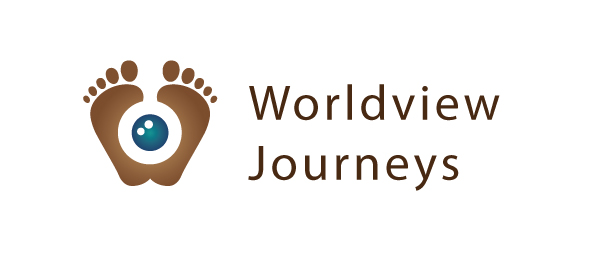
| Traditional worldview | Modern worldview | Postmodern worldview | Integrative worldview |
| Theistic, dualistic, transcendent view of reality | Objectified, materialistic, mechanistic view of reality | Pluralistic, fragmented, relativistic view of reality | Holistic/unified, spiritual-evolutionary view of reality |
| Knowledge through tradition, convention, scripture (literalism, dogmatism) | Knowledge through empirical science, rationality, logic (positivism, scientism) | Knowledge through qualitative modes of knowing (social constructivism) | Knowledge through integration, mixed methods (pragmatism, critical realism) |
| Social self | Independent self | Authentic self | Interdependent self |
| Traditional values (ie., solidarity, security, discipline, service, faith, conformity) | Individualistic values (ie., achievement, hedonism, succes, status, power, fun) | Post-material values (ie., self-expression, imagination, openness to change) | Universal values (ie., self-actualization, wisdom, universalism, transcendence) |
| Emphasis on family, social roles and rules, law and order | Emphasis on the future, belief in progress, optimism | Emphasis on deconstruction of narratives, social justice | Emphasis on individual and cultural evolution and growth |
| Nature as meaningful, divinely constructed order (God’s creation) | Nature as instrumental, objectified, resource for exploitation | Nature as inner source, oppressed voice or entity, larger system | Nature as intrinsically valuable, spiritually significant, partner |
This table offers a concise overview of the four worldviews and their distinctive differences
Summaries of the four worldviews
Traditional worldviews see the universe as God-created, and find truth and knowledge in traditions, conventions, and scripture. They emphasize the group, community, and family, as well as the need for social roles and rules, law and order. They are driven by values like solidarity, security, discipline, conformity, service, and faith; and often have a sense of higher purpose or calling. They see nature as a meaningful, divinely constructed order, which they can use but also have to take care of. The great strength of this worldview is its commitment to the group, its discipline and order, and its social values.
Modern worldviews see the universe as a physical-mechanical, objective entity, and find truth and knowledge in (empirical) science, rationality, and logic. They emphasize the dignity of the individual, and point optimistically at the possibilities for (technological) progress in the future. They are driven by values like achievement, hedonism, succes, knowledge, status, power, material comfort, and fun. They see nature as instrumental; a resource to be used for human purposes. The great strength of this worldview is its commitment to individual autonomy, dignity, and achievement; rationality and objectivity.
Postmodern worldviews see the universe as relativistic, pluralistic, and fragmented, and find truth and knowledge through subjective and qualitative modes of knowing, including art and morality. They emphasize self-expression, and are skeptical about the great (esp. modern) narratives, which they see as oppressive and in service of the powerful. They are driven by values like diversity, authenticity, imagination, inclusion, equality, and environmentalism. They see nature as an inner, subjective source. The great strength of this worldview is its sensitivity to others’ suffering and its commitment to social justice.
Integrative worldviews see the universe as an evolving, spiritually meaningful whole, and they find truth and knowledge through an integration of methods and paradigms, science and spirituality. They emphasize the need for personal growth and see cultural ‘evolution’ as solution to our global challenges. They are driven by values like self-actualization, the search for truth and wisdom, and global peace and compassion. They see nature as intrinsically valuable and spiritually significant; a partner to collaborate with. The great strength of this worldview is its commitment to integrate what’s fragmented and polarised.
Here you can read more about the mixed worldview results, the category that people end up in if they don’t score high enough on any of the four worldviews.
Context
These four worldviews ~ and especially the traditional, modern, and postmodern ones ~ have been recognised by philosophers and sociologists as part of the historical-developmental trajectory of cultural epochs in the West. These worldviews therefore speak to ideas and values, patterns and structures that most of us are familiar with.
However, these worldviews are what sociologists call ideal-types: idea-constructs that depict ‘pure’ or idealised structures and patterns, recognisable in the world around us, yet generally not existing in these pure forms. These ideal-types serve as analytical tools, heuristics that help us put the seeming chaos of social reality in order, and ‘see the forest for the trees’.
Additionally, although these worldviews were found in research in a Western context, there’s substantial support for the idea that these worldviews are relevant and recognizable beyond the West. Take for example the insights as emerging from the results of the World Values Survey, the largest non-commercial, cross-national, empirical, time-series investigation of human beliefs and values ever executed.
Data-analysis by political scientists Ronald Inglehart and Christian Welzel asserts that there are two major dimensions of cross cultural variation in the world. As their results show, massive cultural change is observed over time and throughout the world, with a shift from traditional values dominant in more agrarian societies (resonant with the traditional worldview), to secular-rational values in industrial societies (modern worldview). As well as a shift from survival values to self-expression values dominant in post-industrial societies (postmodern worldview).
This suggests at least the traditional, modern, and postmodern worldviews are observed beyond the West as well. The integrative worldview is not (yet?) clearly distinguished by the World Values Survey, but has been extensively described by various philosophers (for example by Jean Gebser, and more contemporarily by Ken Wilber) and is also recognized in empirical work.
Table and research
In this publication you can find a much more elaborate version of the above table (on p. 102), as well as an extensive report of the study the Worldview Test is based on. Here you can read about the research-approach that was used to develop the Worldview Test.
